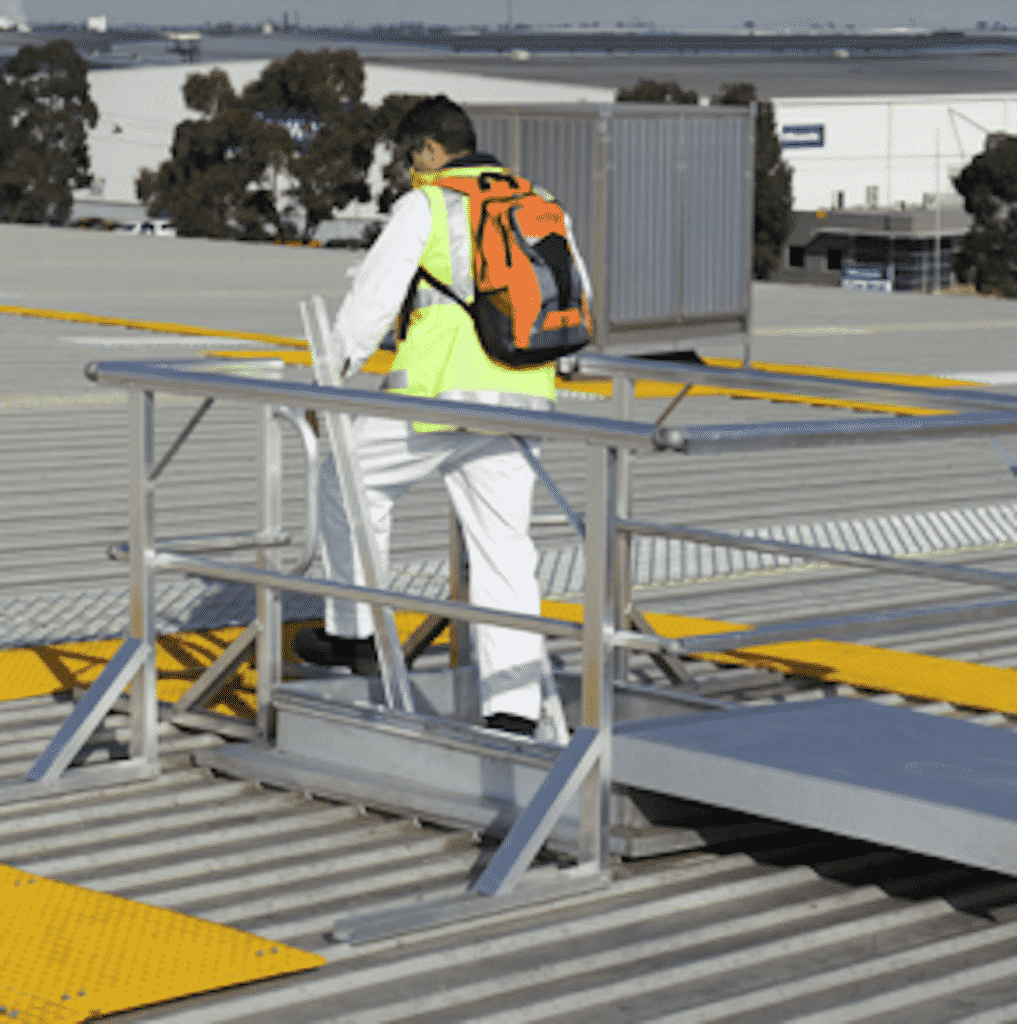Roofs are exposed to elements such as rain, snow and the hot sun. If not regularly maintained, you can expect structural damages to happen:
- Roof shingles are known to fly off or break during storms.
- Tree branches can fall onto the roof cracking the roofing at any time.
- General wear and tear is the norm.
If not properly maintained, your roof will start to give you problems.
One of the best ways to keep your roof in good condition is to perform inspections on a regular basis. Installing a roof access hatch gives you easy and safe access your roof and it’s highly recommended if you’re performing roof inspections often. These inspections will highlight what maintenance and repair work needs to be done. And there’s a lot more you can do!
Here are six ways to stay safe when doing roof inspections, maintenance and repairs.
1. Install a Roof Access Hatch
Homeowners may not realise how useful a roof access hatch is until they need to get onto their roof. If you’re looking for safe and easy access to your roof, one of the best ways to do this is with a roof hatch.
Residential roof hatches are designed to be opened effortlessly. They’re also constructed with durable materials and powder coated to match the colour of your roof. They can include internal locking systems, so you don’t have to worry about security.
2. Invest in a Good Ladder
This may seem obvious but investing in a high-quality ladder is essential if you’re going to be doing roof repairs yourself. This means ensuring the ladder is made with premium material, guaranteeing it’s sturdy and stable at all times.
Look for ladders that have been made with high-quality aluminium. These ladders are durable, robust and lightweight. Make sure the rungs have good grip giving you strong slip resistance. Another feature to look out for is the ergonomic design of the ladder. This ensures you’re comfortable and safe whenever using the stepladder.
3. Use the Ladder Properly
You may have invested in the best ladder but if it’s not used properly it becomes a hazard. Always inspect the ladder before using it to make sure there are no damages. Place it on level and sturdy ground so it remains stable when you ascend and descend.
The ladder should be placed at an angle against a solid backing with the bottom of it slightly away from the bottom of the house. The top of the ladder should extend 3 feet above the roof to give you good grip when accessing the roof. You could wire the top of the ladder to the roof for extra safety.
4. Prepare the Equipment
Whether you’re performing an inspection or carrying out roof repairs, you want to make sure you have all the right equipment on hand. This also includes wearing the right attire such as sturdy boots with grip and a safety helmet. A tool belt is also useful for keeping your equipment all in one place without having to carry a toolbox.
Having the right equipment before ascending up to the roof prevents you from having to go down again if you’ve forgotten something. Every time you go on and off the roof, you’re increasing the danger of falling. Being prepared minimises this risk and you save time as well.
5. Check the Weather First
Before you even decide to carry out a roof inspection or do any roof repairs and maintenance, check the weather. Working in wet conditions is highly dangerous and it’s always advisable to wait a few days after a storm or rain. The roof shingles may still be wet and slippery. However, for emergency repairs, make sure you’re wearing nonslip shoes when accessing the roof after a storm.
While it may seem obvious to stay off the roof during wet or snowy conditions, you also need to take care on hot sunny days. Roof shingles tend to soften under the heat and if you step onto them, they may crack or break completely. The best time to do roof repairs is when the weather is calm and cool.
6. Have Support
It’s always a good idea to have a buddy to support you while you’re doing roof inspections or maintenance. This way you can have someone on the ground watching out for your safety. You can also set up a simple rope-and-pulley system which includes a bucket. If there’s anything you need from down below, your helper can place it in the bucket for you to pull up.
Your team buddy can also help to keep the ladder stable or move it to another spot if necessary, while you’re on the roof. And, if you want to speed up the work, kit your buddy out in the proper attire and do the repairs together.
Final Thoughts
Roof inspections and repairs can be hazardous work if you’re not properly prepared. Installing a roof hatch is one of the easiest and safest ways to access your roof. But, having the right equipment, working under good weather conditions and having a team buddy also goes a long way to improving height safety. So, what will be your first step?

